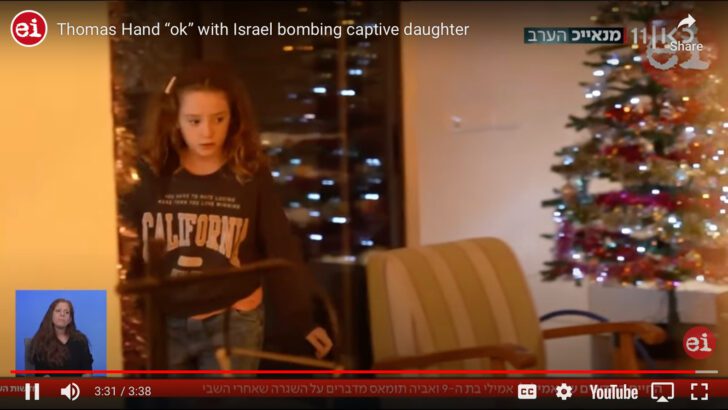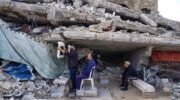An Israeli father gave a frightening TV interview back in February.
by Asa Winstanley, reposted from The Electronic Intifada, May 22, 2024
Thomas Hand grasped the small palm of his 9-year-old daughter Emily. The girl had been released in a prisoner exchange with Hamas only a few months prior.
As she watched on, her father told Israeli interviewer Tali Moreno he had been willing to sacrifice her, in order to further Israel’s genocidal war effort against the Palestinians in Gaza.
Speaking of her short time in Palestinian captivity, he said that the Israeli military “had to do everything in its powers to destroy Hamas,” even if that meant killing his own daughter.
“I realized that she could be bombed, could be shot by friendly fire,” he said. And yet: “That was a price that in my head, I could say: ‘Yeah okay.’ So long as we destroy Hamas.”
The interview was with Israel’s Kan, a state-funded channel. Although conducted mostly in English, there are a few exchanges in Hebrew with Emily herself. You can watch a subtitled version of the full interview here.
But Hand’s cold-blooded attitude towards his own child is only one example of a wider phenomenon in Israeli society.
Many Israelis seem willing to sacrifice their own civilians on the altar of Zionism – and sometimes even themselves too.
As The Electronic Intifada has reported in detail since the Palestinian military assault that started on October 7, Israel that day reactivated its suicidal (and homicidal) “Hannibal Directive.”
This military doctrine directs Israeli forces to deliberately target their own people in the event of likely or actual capture by Palestinian or other Arab resistance fighters.
The aim is to prevent the resistance from gaining Israeli captives who can be used as leverage in prisoner exchange negotiations. But the policy also seems to be rooted in decades-old Zionist mythology.

The Electronic Intifada reported in December on the Israeli military quietly admitting that there had been an “immense and complex quantity” of “friendly fire” incidents on October 7.
According to Yoav Zitun, military correspondent for the Hebrew website Ynet, army command believes “it would not be morally sound to investigate” this friendly fire.
Many Israelis seem to agree.
Although the fact of such “friendly fire” is quite openly discussed in Hebrew in the Israeli media, when The Electronic Intifada and other independent outlets – including The Grayzone, Mondoweiss and The Cradle – report on this in English, they have been attacked and smeared by pro-Israel corporate media in the West and by Israeli media in English.
The Washington Post even tried to outrageously imply that The Electronic Intifada’s accurate coverage – which it did not dispute in substance – was the equivalent of of Holocaust denial.
Although the Hannibal Directive and the fact of an “immense” amount of “friendly fire” on October 7 is an open secret inside Israel, there are few dissenting voices speaking out against it. One Israeli rabbi has even intimated that it may be religiously permissible in order to prevent “national shame.” Indeed, there seems to be a large degree of acceptance of the doctrine, the price that society must pay in the course of wiping out the Palestinians in Gaza – a popularly supported war-aim among Israelis.
One opinion poll in November showed that a staggering 94 percent of Israeli Jews thought that the military was either using the appropriate amount of force in Gaza or not enough force. At that point more than 11,000 Palestinians had already been killed.
As of this writing more than 35,000 Palestinians have been massacred in the course of Israel’s seven-month genocide in the Gaza Strip – a number thought to be a serious underestimate due to the large number of bodies trapped under rubble.
Although Israelis are split on the issue of a prisoner exchange (relatives of the captives have held regular protests and parliamentary lobbies) popular Israeli acceptance of “friendly fire” has, in some cases, spread even to families of Israeli captives in Palestinian custody.
Thomas Hand’s willingness to sacrifice his daughter is not the only example.
Nor was the Kan interview the first time that Hand – an Irish settler who arrived in occupied Palestine decades ago – seemed to approve of Emily’s death.
“Death was a blessing”
Hand had initially been told by the Israeli military that Emily died on October 7.
In a now-infamous interview with tearful CNN reporter Clarissa Ward, a distraught Hand recounted his elation after being told that his daughter was dead.
“I went ‘Yes!’ and smiled,” he said. “If you know anything about what they do to people in Gaza, that is worse than death. That is worse than death. The way they treat you … she’d be … terrified every minute … death was a blessing.”
But Emily was alive.
She was released in the prisoner exchange that took place during the short-lived temporary truce in November last year.
In an interview with Piers Morgan in May, Hand clarified that “I never ever hoped that she was dead. When I was told that she was dead, I was relieved that she wasn’t going through all this suffering.”
Hand’s fear that Emily would be “terrified every minute” during captivity seems to have been misplaced.
Although it clearly had been a frightening experience, Emily told the Kan journalist she’d found solace with a fellow Israeli captive, with whom she “laughed all the time” – despite the harsh conditions imposed by the genocidal Israeli siege on Gaza and by the need to flee constant Israeli bombardment.
Hand is far from the only Israeli with such a macabre attitude – an attitude that is rooted in orientalist fantasies about Palestinian cruelty and savagery, racist views typical of colonists towards the Indigenous peoples whose land and rights they have usurped.
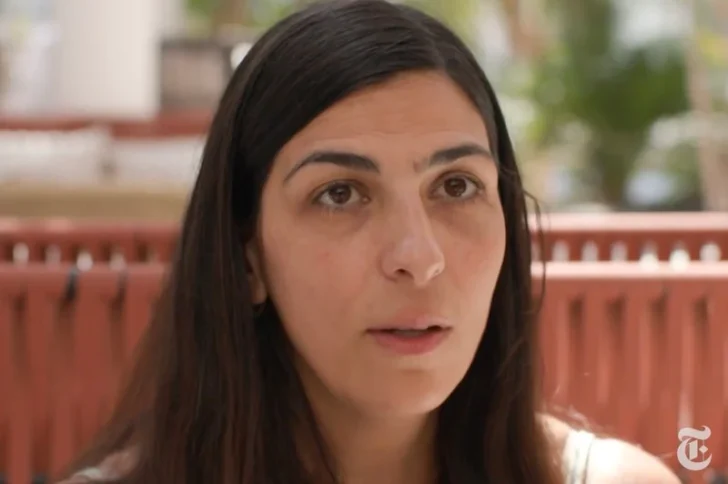
In Kibbutz Nir Oz (a colonial settlement on the frontier with Gaza), mother Natali Yohanan told the New York Times of her family’s experience barricading themselves in their bomb shelter for 12 hours as Palestinian fighters arrived in their home.
The so-called “safe rooms” built in every settlement home near Gaza were never intended to keep out fighters; rather they were designed as shelters from rocket fire. So as is typical, the door to Yohanan’s did not lock.
Yohanan’s husband barricaded the door with his assault rifle. Blurring the distinction between civilian and combatant, many Israelis are armed, especially in population centers near to Palestinians like the so-called “Gaza envelope.”
Recounting their ordeal, Yohanan told the Times: “The kids were so quiet. They were so afraid … And I told my husband – if you can’t hold on any more, I told him: take your weapon and shoot us in the head, make it quick.”
Consideration of a murder-suicide pact seems to have been a not-uncommon Israeli response on October 7.
Guiding media around his former home Kibbutz Be’eri in the aftermath of the October 7 assault, Or Yelin (the son of Argentinian settler Haim Jelin, a prominent local politician) said that he was preparing to stab his own wife to death that day rather than let Palestinian fighters capture her.
Speaking to Israel’s i24 News he explained: “She told me, ‘Or: if they’re coming for us [and] you have just a kitchen knife, please kill me before.’ And you know what I will say to her: Yes.”
Much like Thomas Hand – who described Emily’s captors as “barbarians” – Yelin justified his homicidal ideation with colonial fantasies about the savagery of Palestinian fighters.
Yelin claimed that they would have tortured his wife and: “maybe they will rape her. And after that they will tear her apart and then kill her. This is the reality.”
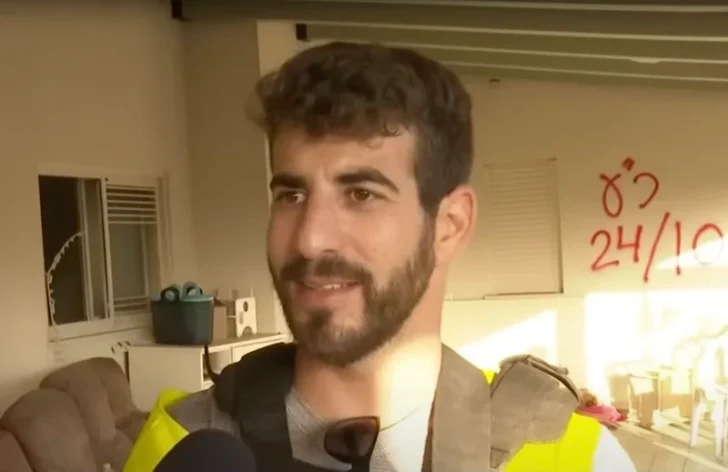
As far as we know, none of the Israelis captured on October 7 has been killed by Palestinians.
On the other hand, it is thought likely that as many as 70 Israeli captives have been killed by Israel in Gaza, in so-called “friendly fire” during the course of Israel’s genocidal bombing campaign – in addition to what is likely to have been hundreds of Israelis killed by Israeli fire after the Hannibal Directive was reactivated during the October 7 assault itself.
Furthermore, despite seven months of lurid Israeli fantasies about natives raping their women, there has still not been a single publically identified victim of an alleged October 7 rape, living or dead.
The Israeli captives seem overall to have been well treated by their Palestinians captors, and almost all of the surviving civilians (and Thai “guest workers”) were released during the brief November truce.
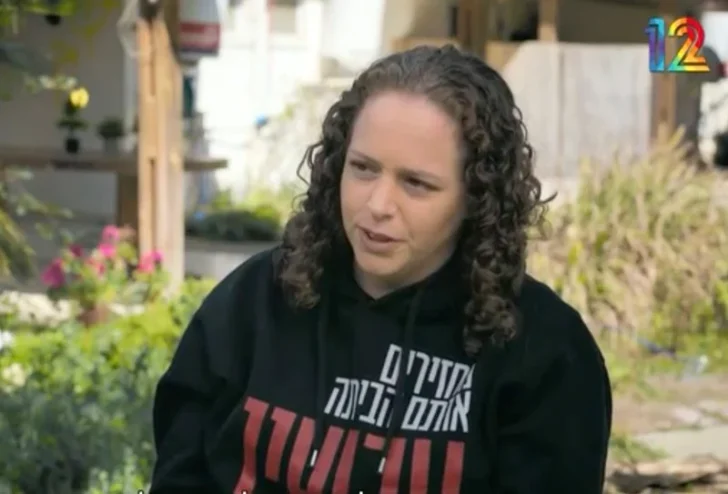
One of those released prisoners was Shani Goren, a resident of Kibbutz Nir Oz.
Goren gave an interview to Israel’s Channel 12 in February, recounting her experience. On October 7 she was shot at by an Israeli attack helicopter, after Palestinian fighters captured her and a group of others.
Alongside all the Palestinian fighters, one of the Israeli captives – Efrat Katz – was killed on the spot, while several others were injured.
Astonishingly, in her interview Goren actually thanked the helicopter pilot who fired on her, even wishing he’d have returned to finish the job after he ran out of ammunition.
“If you would meet the pilot now, what would you tell him?” the Channel 12 interviewer asked Goren.
“I would tell him: ‘Thank you – and why didn’t you stay?’” Goren replied. “Also: ‘Why weren’t you there, here, to take down everyone here?’ If one helicopter had fired, everything would be okay. We would never have gotten to Gaza.”
In other words, not only did Goren seem to approve of the death by helicopter gunship fire of Efrat Katz, but it even seems that she was willing for the whole Israeli group to die – including herself and two children – if it meant stopping captives being taken to Gaza.
Perhaps the most well known “friendly fire” incident on October 7 took place at Kibbutz Be’eri.
Due to the survival of two civilian eyewitnesses, it’s the most well documented example so far of Israeli commanders implementing the “Hannibal Directive” on the ground that day.
As recounted by survivors Yasmin Porat and Hadas Dagan, Israeli commander Barak Hiram ordered a tank fire on the home of Pessi Cohen, where a group of 15 civilians had been held by Palestinian fighters.
Aside from one Palestinian fighter (who surrendered) as well as Porat and Dagan, everyone who’d been in the house was killed in the resulting explosion. The Israeli casualties included 12-year-old Liel Hatsroni, a girl whose photo was later used in Israeli government propaganda to falsely allege that she’d been burned to death by Hamas.
After a public campaign by relatives of the dead, the Israeli army opened an investigation in February. Despite that, Prime Minister Benjamin Netanyahu soon after interviewed Hiram for the position of his military secretary. Any such promotion seems unlikely to happen until after the investigation concludes.
Yet even one of the relatives of the girl who was burned to death on Hiram’s orders told an Israeli TV channel that he was willing to “pay a price” – including killing Israeli civilians – if it would have achieved something on the battlefield.
Hatsroni’s cousin Omri Shifroni told Kan news: “I am willing to pay a price: that we will kill our civilians in exchange for something else. But what is the something else? To advance quickly? Why? Why?! Did we with certainty save anyone by shooting a shell here?”
What accounts for this widespread – though not unanimous – acceptance by Israelis of what could be understood as a sort of national mass-suicide pact? One Israeli air force colonel described October 7 as a “Mass Hannibal” event.
A clue is in the name chosen by Israeli army officers to describe the Hannibal Directive.
Hannibal was the most famous general to lead the Carthaginians, the North African civilization which the Roman Empire viewed as its foundational nemesis.
In the end, he poisoned himself rather than be captured alive by the Romans. It seems likely that the Israeli policymakers who created the secret doctrine in 1986 chose the name specifically because of its implications of “heroic” suicide.
A second clue lies in the fact that the valorization of mass-suicide is ingrained into generations of Israelis by decades of Zionist indoctrination.
Israeli identity “rotten”
This phenomenon has been described by Israeli literature professor Yoav Rinon as a belief in “heroic suicide” based on the twin myths of Samson and Masada.
“Samson – the seminal myth of Jewish-religious-nationalist fanaticism – intertwines eros, kitsch and death, the unholy trinity on which fascist romanticism is founded,” Rinon argues in a recent essay for Haaretz.
He writes that “contemporary Israeli identity is rotten” thanks to these myths.
In the Bible story, Samson is a leader of the Israelites who fights his archetypal enemies the Philistines. After he is betrayed by Philistine love interest Delilah (who shaves Samson’s hair, robbing him of his miraculous strength) he is captured and blinded by the Philistines.
With his eyes gouged out, Samson is brought to Gaza in chains for the amusement of the Philistine lords. Samson pleads with the Israelite god Yahweh to return his magical strength, so that “with this one act of revenge” he can kill everyone present by bringing down the building on top of them all – including himself.
He promptly does so, but not before intoning: “Let me die with the Philistines.”
In his essay Rinon traces how this mythical story about the “thuggish” Samson has been embraced in Israel by everyone from the most extreme West Bank settlers to the Israeli army troops amassing to invade modern-day Gaza.
“The entire myth of the biblical Samson leads to his heroic suicide as an exemplar for the greatest and worthiest sacrifice of all, ostensibly one made in the name of God,” Rinon explains.
However – and crucially – Rinon argues that this “heroic suicide” ideal is not “confined solely to religious-nationalist Jewish zealotry.” It also extends to the ostensibly secular-nationalist Israeli public.
Invented “history”
Rinon argues that “secular [Israeli] Judaism has an equivalent myth of its own, and education in its light begins in primary school. It’s the myth of Masada.”
The legend of the “heroic” mass suicide pact supposedly carried out by the Jewish Sicarii sect at the Roman fort of Masada, near the Dead Sea, is deeply ingrained in secular Israeli culture.
School children are indoctrinated into the site’s mythology with field trips from a young age, and many Israeli soldiers graduate from basic training at ceremonies held there.
“Masada shall not fall again,” has been the Zionist motto since 1948.
But the official Masada narrative was in large part invented in the 1960s by Israeli general and colonial archaeologist Yigael Yadin. Between 1947 and 1949, Yadin played a key role in planning and executing the Nakba: the expulsion of the Palestinians to create Israel.
In his book The Ethnic Cleansing of Palestine, the Israeli historian Ilan Pappé documents how, early in 1948, as chief of staff of the pre-state Zionist militia the Haganah (and later of the Israeli military), Yadin carried out “deep invasions” of heavily populated Palestinian areas – including in the city of Jaffa (part of modern-day Tel Aviv) where “houses were randomly dynamited with people still in them.”
The result was that Yadin and his accomplices expelled about 800,000 Palestinians. They and their descendants are still blocked by Israel from returning until today, purely because they are not Jewish.
In the early years of the Zionist state, to help finish the job of those mass expulsions, Israel embarked on a multi-faceted program of fabricating “historical” ties to the land of Palestine for the largely European Jewish settlers.
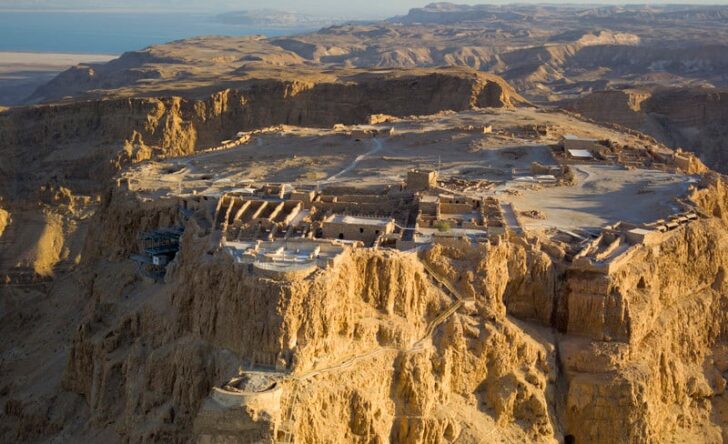
As part of this effort, Yadin turned to “biblical archeology” – a dubious but potentially lucrative profession which had long been practiced by European imperialists in Palestine.
Both the Jewish European Zionists and Christian European imperialists (many of whom were also Zionists) had been determined to simplify or fabricate the inconvenient realities of actual archeological findings – or more accurately the lack of such findings – to make the facts fit around the literalist interpretations of the Bible dominant in the West.
There’s no historical evidence for the existence of mythical Bible figures like Samson, and – according to some archaeologists – the “siege” of Masada may not even have taken place at all.
The truth is that the official Masada story – as still widely disseminated to Israelis and tourists today – was concocted to suit the interests of the new Zionist state.
The invented history goes like this:
In 73 AD, a brave group of about 1,000 Jewish fighters and their families retreated to Masada, a fortified Roman clifftop redoubt, and there they resisted Roman occupation until the end. After an epic Roman siege, on the brink of defeat, the fighters killed their families then ended their own lives in a mass murder-suicide rather than be captured.
The story clearly has resonance with what Hannibal had done 250 years earlier, and with what some Israelis are threatening to do almost 2,000 years later.
But the historical reality was otherwise and “most Israeli archaeologists now accept that what really happened at Masada was very different” from the Yadin version, journalist Patrick Cockburn reported back in 1997.
When Yadin excavated the Masada site between 1963 and 1965, there was one glaring problem: they found no mass grave. There was no evidence of any “mass suicide” of the Jewish cult that had captured Masada.
“It was completely made up, there was no evidence for it,” one veteran British volunteer of the Masada dig told The Observer in 2013.
“Let our wives die before they are abused”
Today, Masada is one of the largest Israeli tourist attractions and a UNESCO World Heritage site. About 750,000 annual visitors reportedly attended before 2020, many of them Christian Zionists from North America.
It is serviced by a cable car, a campsite and even a museum named after the war criminal Yigael Yadin.
Although the words attributed to him by Roman Jewish historian Josephus were almost certainly a literary invention, the speech of Sicarii leader Eleazar ben Yair has a modern resonance today among many Israelis.
“Let our wives die before they are abused, and our children before they have tasted of slavery,” Josephus claims Eleazar said.
Although these words were fiction, many Israelis seem to have taken them to heart. Israelis like Or Yelin, Shani Goren and Thomas Hand.
The hand of Zionism’s myth-makers casts a long shadow.
Is it too late for international resistance to Zionism to save Israelis from themselves? And how many Palestinians will they take down with them in the process?
The future is yet unwritten.
With translation by Dena Shunra, translation and additional research by David Sheen, plus additional research by Tamara Nassar.
Asa Winstanley is an associate editor with The Electronic Intifada and an investigative journalist. He is the author of Weaponising Anti-Semitism: How the Israel Lobby Brought Down Jeremy Corbyn (OR Books, 2023).
RELATED ARTICLES:
- Another Israeli soldier admits to implementing the ‘Hannibal Directive’ on October 7
- Israeli October 7 posterchild was killed by Israeli tank, eyewitnesses reveal
- Israeli newspaper: Israeli army ordered the killing of Israeli civilians and soldiers Oct 7
- What media reports fail to tell you about October 7
- Israel has lost control of the narrative – October 7 truths coming out
- October 7th myths are still out there, killing Palestinians

